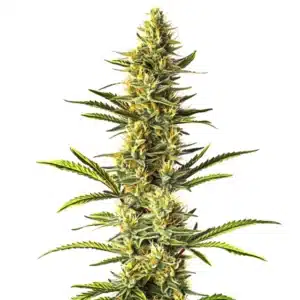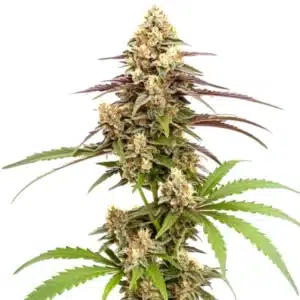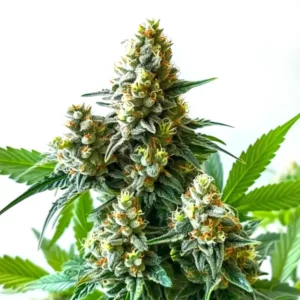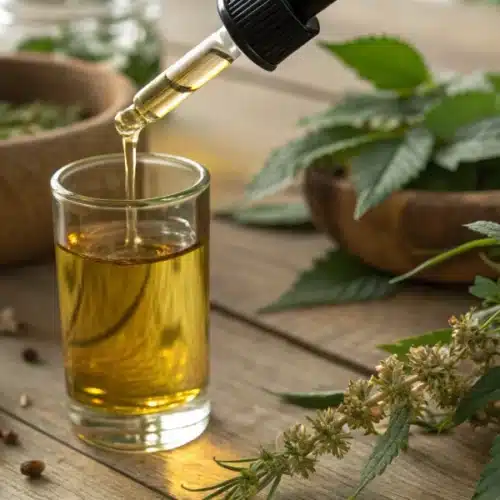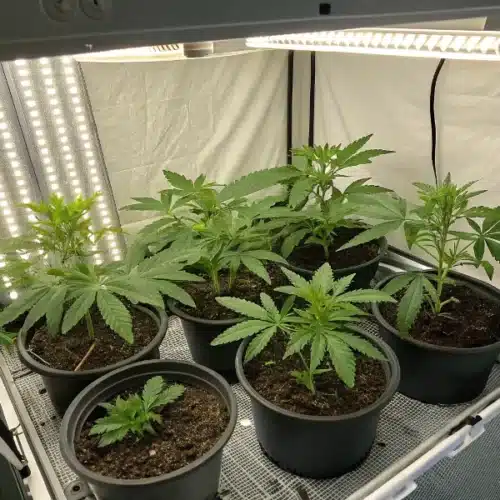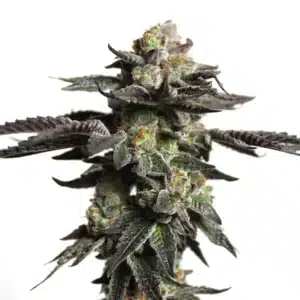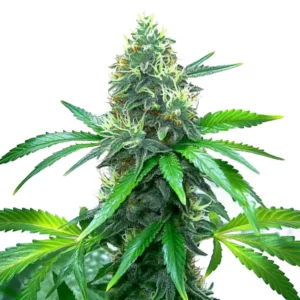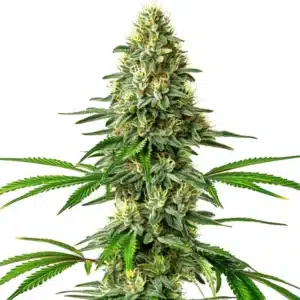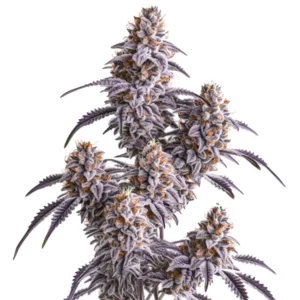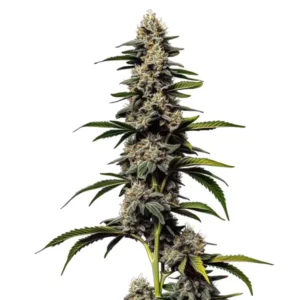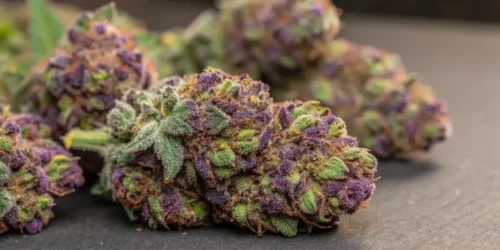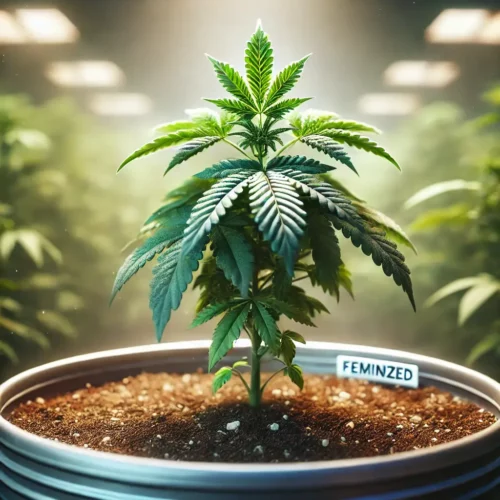Batch Drying for Cannabis
What Is Batch Drying?
Batch drying cannabis refers to the process of drying multiple plants or large quantities of cannabis at once, rather than handling each plant individually. This method is commonly used by growers managing larger harvests or those looking to streamline their post-harvest processes. Batch drying involves organized drying setups, such as racks, trays, or automated systems, to ensure even and efficient drying across all buds.
The primary goal of batch drying cannabis is to maintain the plant’s potency, flavor, and aroma while reducing moisture content to safe levels. This prevents mold growth and prepares the buds for curing and long-term storage. Additionally, this method helps maintain consistent quality, especially in commercial-scale operations, where uniformity is crucial.
Benefits of Batch Drying for Cannabis Cultivation
Batch drying cannabis offers several advantages. First, it significantly reduces the time and labor required for drying compared to individual handling. This is especially beneficial for commercial growers with large-scale operations. Additionally, batch drying ensures consistent results when properly executed, as all buds are exposed to the same controlled conditions.
Another advantage is the ability to utilize advanced drying equipment, such as automated dehumidifiers and climate control systems. These tools enhance efficiency and improve the overall quality of the final product, making batch drying cannabis a preferred choice for many growers. Beyond efficiency, batch drying is a scalable solution, accommodating operations of varying sizes while maintaining the highest standards.
Promos & Deals
Preparing Cannabis for Batch Drying
Harvesting at the Right Time
Harvest timing is critical to the success of batch drying cannabis. Monitor trichomes closely, harvesting when most are milky with some amber. This indicates peak potency and flavor. Avoid harvesting too early or late, as this can impact the quality of the dried buds.
Proper harvesting ensures that your cannabis enters the drying process at its optimal state. Trim large fan leaves before starting the drying process to reduce moisture content and improve airflow. Paying attention to the plant’s maturity helps lock in its cannabinoid and terpene profile, ensuring a premium product post-drying.
Trimming Techniques Before Drying
Trimming cannabis before drying removes excess foliage and enhances airflow around the buds. Wet trimming, where leaves are removed immediately after harvesting, is common for batch drying cannabis. This method reduces drying time and minimizes the risk of mold.
Use sharp, sterilized scissors for precise trimming. Neatly trimmed buds dry more evenly and cure better, preserving their terpenes and cannabinoids. For large harvests, consider automated trimmers to save time and effort. Investing in proper trimming techniques pays off in higher-quality, visually appealing buds.
Setting Up the Drying Space
A well-prepared drying space is essential for successful batch drying cannabis. Choose a dark, well-ventilated area with controlled temperature and humidity levels. Ideal conditions are 60-70°F with 55-65% humidity.
Organize the space with racks, trays, or hanging lines to ensure even airflow around all buds. Avoid overcrowding to prevent uneven drying and potential mold issues. Additionally, clean and sanitize the area to minimize contamination risks and maintain the integrity of the drying environment.
Methods of Batch Drying Cannabis
Traditional Hang Drying
Hang drying is a classic method where cannabis plants or branches are suspended in a drying space. This allows air to circulate freely around the buds, promoting even drying. This method is cost-effective and works well for growers with ample space.
Batch drying cannabis using hang drying requires proper spacing to prevent buds from touching. Ensure consistent environmental control to avoid over-drying or moisture retention. Hang drying is particularly favored for its simplicity and ability to preserve the plant’s natural structure.
Rack or Tray Drying
Rack or tray drying involves spreading trimmed buds on mesh or perforated trays. This method is efficient for batch drying cannabis, especially for larger harvests, as it maximizes space usage.
Rotate trays periodically to ensure uniform drying. This technique is ideal for growers looking to streamline their post-harvest processes. It also reduces the risk of contamination by keeping buds separated and allowing for better airflow management.
Automated Batch Drying Systems
Automated systems use advanced technology to control temperature, humidity, and airflow. These systems are designed to handle large quantities of cannabis efficiently, making them a top choice for commercial operations.
Batch drying cannabis with automated systems ensures consistent quality and reduces the labor required for monitoring and adjustments. They are a valuable investment for serious growers seeking to optimize productivity and ensure consistent outcomes across all batches.
Optimal Conditions for Batch Drying Cannabis
Ideal Temperature and Humidity Levels
Maintaining proper temperature and humidity is crucial for successful batch drying cannabis. Temperatures between 60-70°F and humidity levels of 55-65% ensure slow, even drying. This preserves terpenes and cannabinoids, enhancing the overall quality of the buds.
Use hygrometers and thermostats to monitor conditions. Adjust dehumidifiers, heaters, or fans as needed to maintain a stable environment. Adhering to these conditions minimizes the risk of over-drying or moisture retention, which can affect the final product’s integrity.
Importance of Air Circulation
Adequate airflow prevents moisture buildup and reduces the risk of mold. Use oscillating fans to circulate air gently, avoiding direct airflow on the buds, which can cause uneven drying.
Batch drying cannabis requires consistent air movement to ensure all buds dry at the same rate. Proper circulation also helps preserve the plant’s aroma and potency, ensuring that each batch meets the highest quality standards.
Avoiding Light Exposure
Light exposure can degrade cannabinoids and terpenes during the drying process. Keep your drying space dark to protect the quality of your cannabis. Use blackout curtains or light-blocking materials if necessary.
Minimizing light exposure is a key factor in achieving high-quality results when batch drying cannabis. This practice safeguards the plant’s potency and enhances the flavor and aroma of the final product.
Tips for Efficient Batch Drying
Grouping Buds by Size for Uniform Drying
Organize buds by size to ensure even drying. Larger buds take longer to dry, while smaller ones can dry too quickly if mixed together. Sorting by size allows for better moisture control and consistency. Batch drying cannabis is more effective when similar-sized buds are grouped. This reduces the risk of overdrying small buds or under-drying larger ones. Proper grouping also simplifies the curing process by ensuring all buds are ready simultaneously.
Monitoring Progress to Avoid Overdrying
Check buds daily to assess their progress. Properly dried cannabis should feel slightly crisp on the outside while retaining some flexibility. Overdrying can reduce potency and flavor. Batch drying cannabis requires careful monitoring to achieve the perfect moisture level. Use a moisture meter for accurate readings. Regular checks help maintain the desired quality and prevent losses due to over-drying.
Cleaning and Maintaining Drying Equipment
Clean racks, trays, and automated systems after each batch to prevent contamination and ensure optimal performance. Regular maintenance prolongs the life of your equipment and improves drying efficiency. Batch drying cannabis in a clean environment enhances the quality of your harvest and reduces potential issues. Proper sanitation practices also safeguard against cross-contamination, preserving the integrity of future batches.
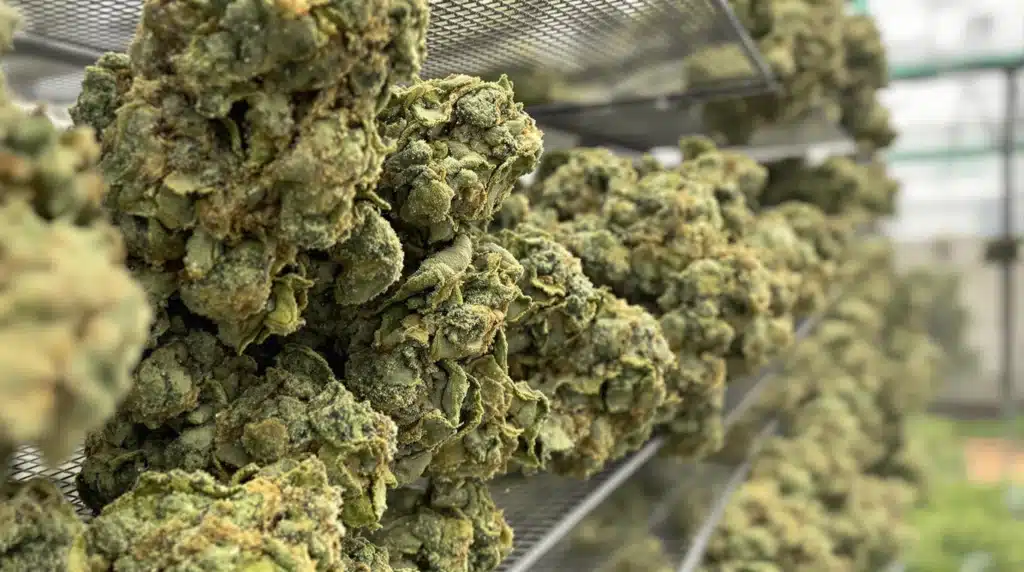
Challenges in Batch Drying Cannabis
Preventing Mold and Mildew
Mold and mildew are common risks when drying large quantities of cannabis. Proper airflow, humidity control, and sanitation practices are essential to prevent these issues.
Inspect your buds regularly during batch drying cannabis to catch any signs of mold early. Swift action can save the rest of your harvest. Prevention strategies include maintaining clean equipment and using dehumidifiers to regulate moisture levels.
Managing Large Harvests Effectively
Handling large harvests can be challenging, especially when drying space is limited. Plan ahead by setting up enough drying racks or trays and organizing your workflow efficiently.
Batch drying cannabis for large-scale operations requires strategic planning to ensure consistent results without compromising quality. Proper preparation helps streamline the process and reduces bottlenecks during critical post-harvest stages.
Comparing Batch Drying to Other Drying Methods
Batch Drying vs. Single Plant Drying
Batch drying cannabis saves time and labor compared to drying single plants individually. However, single-plant drying allows for more precise monitoring, which may be beneficial for smaller operations.
Both methods have their merits, but batch drying is the preferred choice for growers handling larger quantities. The efficiency of batch drying makes it a practical solution for meeting high demand while maintaining quality.
Pros and Cons of Batch Drying
Batch drying cannabis presents numerous benefits, such as scalability and reduced labor requirements. It also facilitates efficient use of space and equipment, making it ideal for large-scale operations. However, this method demands careful management to avoid challenges like uneven drying, which can lead to mold or degraded quality.
Automated batch drying systems help mitigate these risks by maintaining precise control over temperature and humidity. While these systems come with a higher upfront cost, their long-term efficiency and reliability often justify the investment, especially for high-volume growers.
Advanced Techniques for Batch Drying
Using Dehumidifiers for Consistent Results
Dehumidifiers are indispensable for maintaining optimal humidity levels during the drying process. By controlling moisture in the air, they prevent mold and mildew growth while ensuring an even drying environment. This is especially crucial in regions with naturally high humidity.
When batch drying cannabis, integrating dehumidifiers into the setup ensures consistent outcomes across all batches. This not only preserves the cannabinoids and terpenes but also enhances the overall quality and market value of the product.
Vacuum Drying for Faster Processing
Vacuum drying leverages low-pressure environments to expedite the drying process while safeguarding terpene and cannabinoid profiles. This technique minimizes exposure to oxygen and heat, reducing the risk of degradation.
Batch drying cannabis using vacuum technology is a game-changer for commercial growers who prioritize both speed and quality. It’s a sophisticated approach that delivers high-quality results in significantly less time, making it a valuable addition to any large-scale operation.
Monitoring Drying with Digital Tools
Digital tools, such as hygrometers and temperature sensors, provide real-time insights into the drying environment. These devices allow growers to adjust conditions promptly, ensuring optimal drying across all batches.
Batch drying cannabis with advanced monitoring tools enhances precision and minimizes errors. Real-time data empowers growers to maintain consistent quality, preventing issues like overdrying or loss of potency.
Storing Cannabis After Batch Drying
Proper Curing Techniques
Curing is a critical step that follows drying, significantly improving the flavor, potency, and smoothness of cannabis. Store dried buds in airtight glass jars, opening them daily during the first week to release excess moisture. This process, known as “burping,” helps regulate humidity and prevents mold growth.
After batch drying cannabis, a thorough curing process refines the final product, ensuring it meets premium quality standards. Proper curing not only enhances the user experience but also maximizes the product’s shelf life.
Using Airtight Containers for Longevity
Airtight containers protect cannabis from air, light, and humidity. Store jars in a cool, dark place to preserve quality over time.
Investing in quality storage solutions ensures that your batch drying cannabis efforts yield long-lasting results. Proper storage practices maintain the product’s freshness and potency for extended periods.
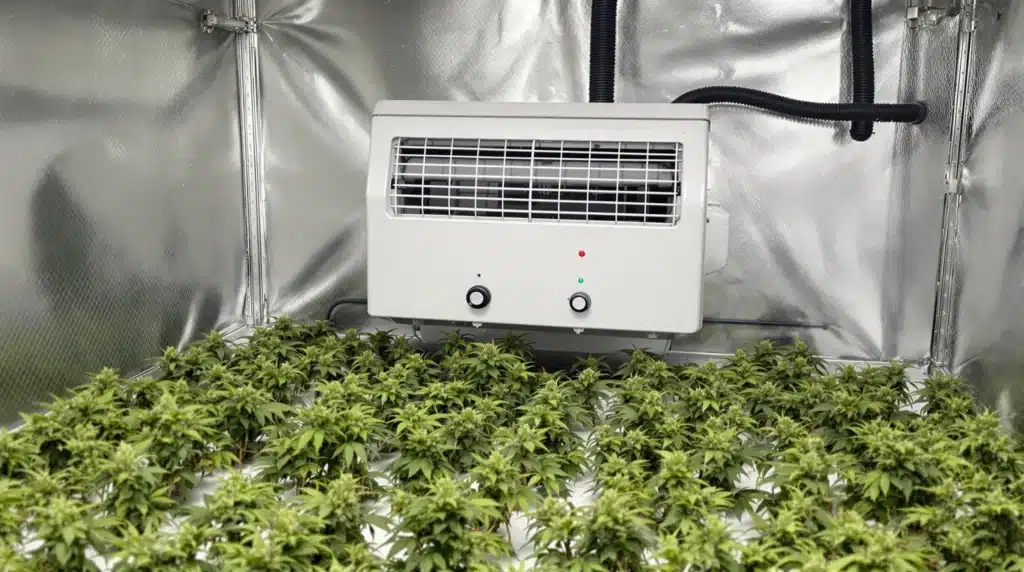
FAQs About Batch Drying Cannabis
How long does batch drying take?
Batch drying cannabis generally requires 7-10 days to complete, depending on factors such as bud size, ambient humidity, and airflow. Regular monitoring is essential to achieve optimal results, avoiding both overdrying and underdrying.
What is the best temperature for drying cannabis?
The ideal temperature range for batch drying cannabis is 60-70°F. Maintaining consistent conditions within this range helps preserve cannabinoids and terpenes, ensuring a high-quality end product.
Can batch drying affect cannabis potency?
When done correctly, batch drying cannabis preserves potency by protecting delicate cannabinoids and terpenes. Careful management of temperature, humidity, and airflow is essential to maintaining the plant’s full therapeutic and recreational benefits.

